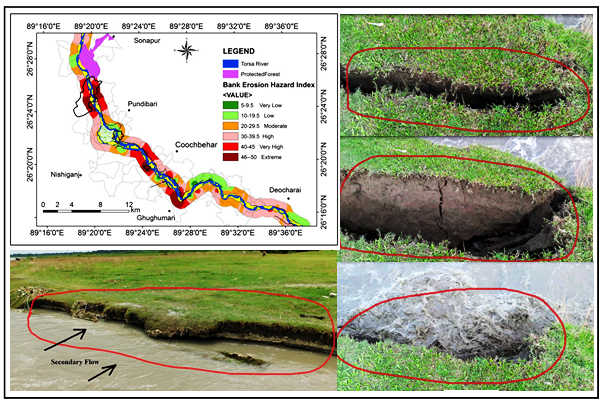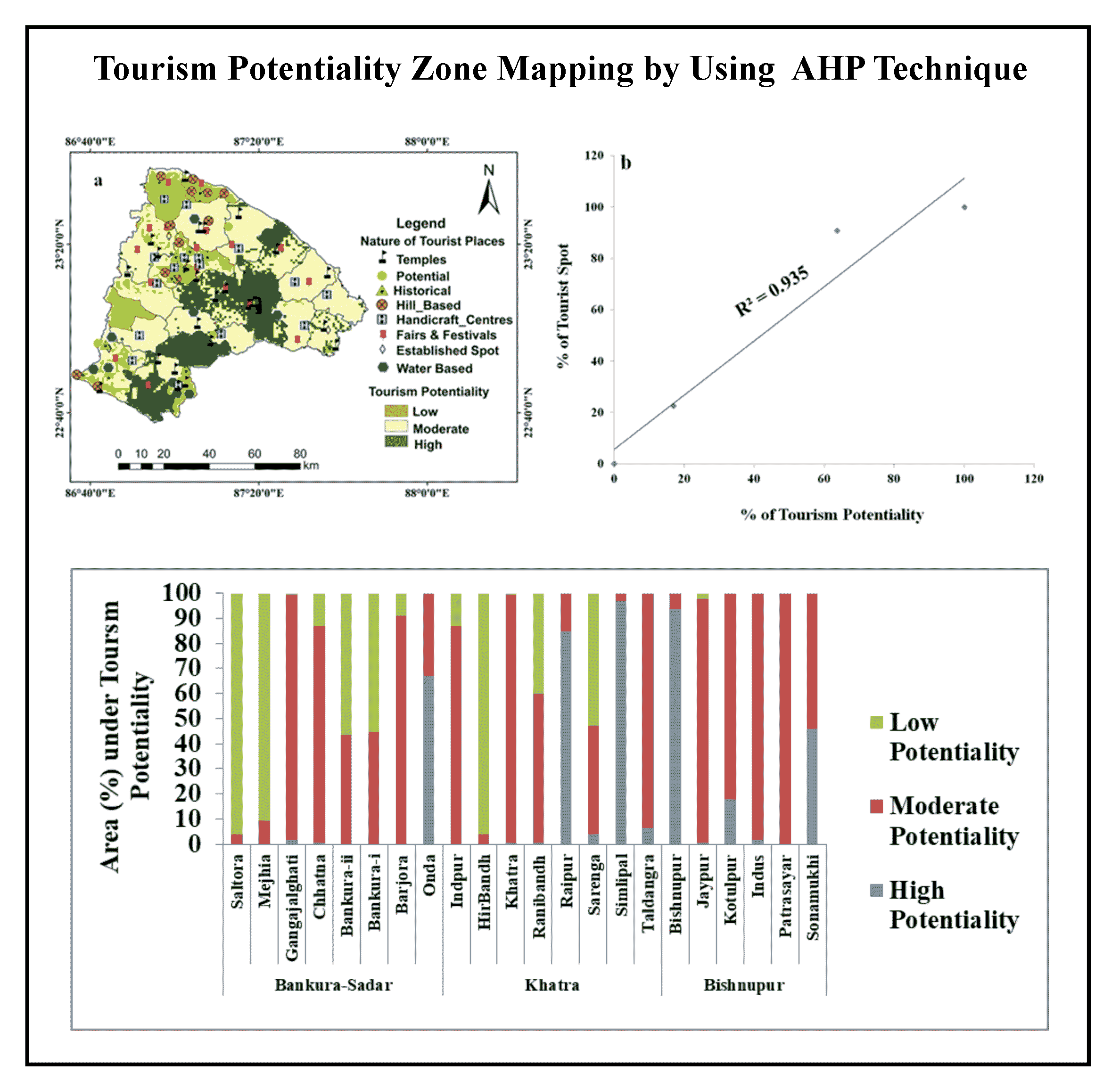Article Title :
Fluvial Processes and Channel Stability of the Torsa River West Bengal India 
2 (2018)
62-78
Bank stability , Bank Erosion Hazard Index , Near Bank Stress , Bank Erosion Vulnerability Zone , Remote Sensing , GIS


Fluvial processes such as bank erosion plays an important role to change the channel stability of the Torsa River in the downstream region. The present study was focused on stream stability assessment of the Torsa River. The study area is situated between the downstream of the Jaldapara Reserve Forest and confluence of Kaljani River. Data of different parameters about 64 bank segments of the Torsa River were prepared using the field work techniques for assessing the stream bank conditions using lateral, vertical and overall reach stability models. The individual results of BEHI and NBS ratings show that out of 64 bank segments only 35 and 19 bank segments classified in higher categories. Overall lateral stability analysis shows that most of the sample bank segments are in an unstable condition. All bank segments are vertically unstable and degrading. Overall reach stability analysis shows widespread instability. BEHI and NBS results are almost similar for most of the bank segments and therefore, BEHI and NBS can be suitable bank erosion hazard predictive models in the study for channel stability analysis.

The channel morphology is determined by the interaction of fluid flow with erodible materials.
Torsa River is experiencing severe bank erosion and course changing, regularly.
BEHI and NBS ratings are calculated for analysis of laterally and vertically instability of Torsa River channel.
35 and 19 bank segments are classified in higher categories of BEHI and NBS ratings.
Most of the sample bank segments are laterally and vertically unstable and degrading.
BEHI and NBS cab be suitable bank erosion hazard predictive models for analysis of channel stability of Torsa River.
Dey, S. and Mandal, S., 2018a. Assessment of channel shifts hazard of the River Torsa in the Eastern Himalayan Foothills, India. International journal of basic and applied research, 8 (7). 742-758.
Knighton, D., 1998. Fluvial Forms and Processes- A New Perspective. Edward Arnold Ltd. London.
Maiti, R., 2016 Modern Approaches to Fluvial Geomorphology. Primus Books, Delhi, India.
Rosgen, D. L., 1996. Applied River Morphology. Wildland Hydrology Books, Pagosa Springs, Colorado.
Rosgen, D. L., 2006. A watershed assessment for river stability and sediment supply (WARSSS). Wildland Hydrology Books. Fort Collins. Colorado.
Simon, A., Curini, A., Darby, S. and Langenden, E., 1999. Stream bank mechanics and the role of bank and near-bank processes. Darby, S., Simon, A. (Eds.) Incised river channels. Wiley, NewYork, 123-152.
Starr, R.R., 2009. Stream Assessment Protocol Anne Arundel County, Maryland. Stream Habitat Assessment and Restoration Program. U.S. Fish and Wildlife Service. Chesapeake Bay Field Office.
Thorne, C. R., 1982. Processes and mechanisms of river bank erosion. Hey, R. D., Bathurst, J. C., Thorne, C. R. (Eds.) Gravel-bed rivers. Wiley, Chichester, 227 -271.
Thorne, C. R., 1999. Bank processes and channel evolution in North Central Mississippi. Darby, S., Simon, A. (Eds.) Incised river channels. Wiley, New York, 97-121.





